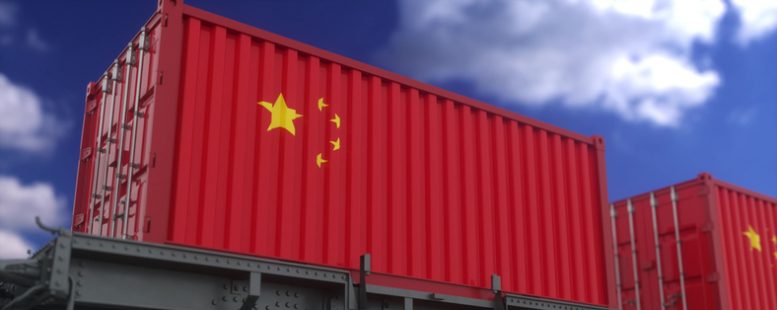Our Opinion: 2023
China’s decade of buying influence

It is 10 years since China launched its Belt and Road Initiative, designed to buy influence by the construction of foreign infrastructure.
China marked the occasion last month by holding a large conference – the Belt and Road Forum – in Beijing. The Belt and Road Initiative (BRI) is the term for China’s massive investments in foreign infrastructure – mostly in poorer countries – that has grown into the world’s biggest multilateral development programme on record. President Xi welcomed world leaders, including Vladimir Putin and Indonesia’s Joko Widodo, to celebrate the BRI’s achievements and chart a course for the future. He was clear that, amid discontent at home over the cost, China’s need to ensure its home markets benefit from Beijing’s foreign policy.
Being clear about the influence this programme gives China, Xi told his guests “When you give roses to others, their fragrance lingers on your hand. Helping others is also helping oneself.”
China says it has made investments and loans totalling $1trn in the past ten years. It also claims the BRI has created 420,000 jobs and lifted 40 million people out of poverty. The purpose of the initiative was always explicitly about using economic power to grow China’s geopolitical and diplomatic power and embed China’s influence across the developing world. Given its scale, however, some analysts question whether it is useful to see the Belt and Road as a single initiative with an overarching vision.
Jacob Mardell, a researcher specialising in the area, is sceptical of the $1trn figure, and believes that the various schemes under the BRI umbrella have little strategic coherence. He has said that the BRI is “simply branding for a narrative that Beijing is trying to sell about its place in the world.” There are no fixed criteria for what qualifies as a Belt and Road project (Beijing includes projects that are built by Chinese companies even if no Chinese funding is involved) and it’s more a slogan than a coherent vision or mission.
It’s certainly true that what is meant today by the “Belt and Road Initiative” has expanded far beyond its original vision of “One Belt, One Road” – meaning a new Silk Road reviving ancient overland routes from China through Central Asia and the Middle East to Europe; plus investments in ports to strengthen China’s connections to the same regions by sea. BRI projects span the globe, from Brazil to Laos, but with a particular focus on Africa.
More than 150 countries have signed deals linked to the scheme – nations that make up more than half the world’s GDP and 75% of its population. No fewer than 18 of the European Union’s 27 member states have signed up to the BRI – most notably Greece, where Chinese money was vital to rebuilding the port at Piraeus. Italy is the largest European country to get involved, and the only one of the G7 bloc of rich, industrialised nations.
In many ways, the BRI has lived up to the hype. Hundreds of billions of dollars have been used to build railways, roads, power plants, ports, high-speed data networks and other infrastructure that would otherwise have gone unfunded. Much of this has been good: many countries badly need better roads. But not all has gone to plan. Many projects have been mothballed or abandoned, while others have become white elephants.
Some countries have struggled with debt repayments, and BRI debt has in some cases (such as Sri Lanka and Zambia) helped fuel wider economic crises. And China has made things worse by shunning other lenders and multilateral institutions, instead conducting debt negotiations secretly and with apparent stubbornness.
Out of a total of $966bn in BRI transactions between 2013 and the middle of this year – a figure that includes construction projects and investments by Chinese companies in 152 countries – about 10% of the deals are classified as “troubled”, according to data compiled by the American Enterprise Institute, a US think tank. Between 2019 and 2021, Beijing granted $104bn in rescue loans on BRI-linked projects, with the real aim of protecting its own banking sector – the sum is almost as big as China’s bailout lending worldwide in the previous 20 years.
A prime example of both successes and failures is Pakistan – the top recipient
of BRI funding, and, as Xi himself confirmed in July, an important flagship for the concept. China’s $62bn investments in Pakistan’s energy sector and infrastructure have greatly boosted foreign direct investment into the country. However, 40% of projects in the China-Pakistan Economic Corridor have run into trouble such as corruption, funding shortfalls or adverse environmental impacts.
At the Beijing Forum, President Xi has pledged a further $100bn to future BRI projects. But there was a sense of a more focused project with a smaller scope overall – no doubt in part due to struggles with debt repayments, and China’s domestic economic troubles sapping enthusiasm for lending to foreigners. China’s outbound lending actually peaked in 2016. It has been falling since.
In 2020, for example, China’s new lending to African governments was less than $2bn, the lowest sum since 2004. Xi is now talking about “small but smart” investments. BRI is now likely to focus more on green energy, public health and digital infrastructure. And in terms of geography, the focus is likely to shift from Africa to Southeast Asia – a region that is critical to supply chains for China’s high-tech products.
BRI will continue to be a global initiative. But China’s new focus is on cementing relationships closer to home.
13th November 2023
